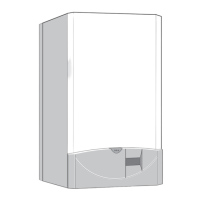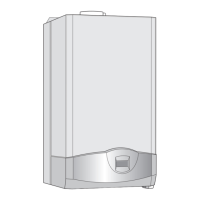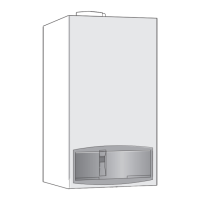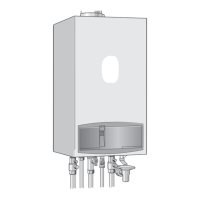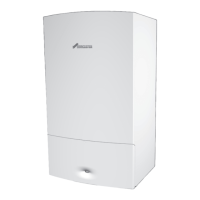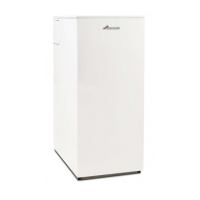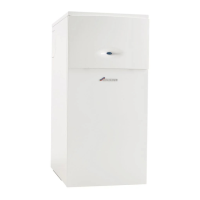Supplied By www.heating spares.co Tel. 0161 620 6677
7 181 465 347 (05.01)
Rectifying faults
17
4.3 Notes on using the fault code tables
The procedure is best described with the aid of
an example:
•Work through the table from top to bottom and from
left to right.
• First make a note of the present settings and restore
them before leaving the appliance.
• Read question 1. (Check column)and depending on
the answer (yes or no) read the action required from
the relevant box and carry out the instruction given;
ignore the other answer. For example: if the burner
flame is visible, follow the instructions for yes,
i.e. ↓5.!
• ↓5. means go to number 5., ignoring the steps in
between.
In this example: check the flue is clear by testing
the CO
2
level.
• If the appliance is locked ( button is flashing),
press the button.
• If the fault has been rectified, the appliance will then
start up without indicating a fault and the fault isola-
tion procedure is complete.
• If the fault is still present after performing the action
specified and, if necessary, restarting the appliance,
move on to the next step in the fault isolation proce-
dure.
• If another fault code is displayed, work through the
fault code table for that code.
Fig. 6 Example of fault code table
EA and flashing.
Flame not detected
Check Action
1. Is a burner flame visible? yes: ↓ 5.
no: ↓ 2.
2. Is the gas cock turned on? yes: Ø 5.
no: B Open the gas cock.
B Press button .
EA? ↓3.
3. Has the thermal cut-out on the gas
cock tripped?
yes: ...
no: ↓ ...
4. ... ...
5. ... Problem with flue?
B Check CO
2
level in combustion
air.
Is CO
2
level above 0,2 % ?
yes: Check flue.
no: ↓ ...
7181465347-01.1O
